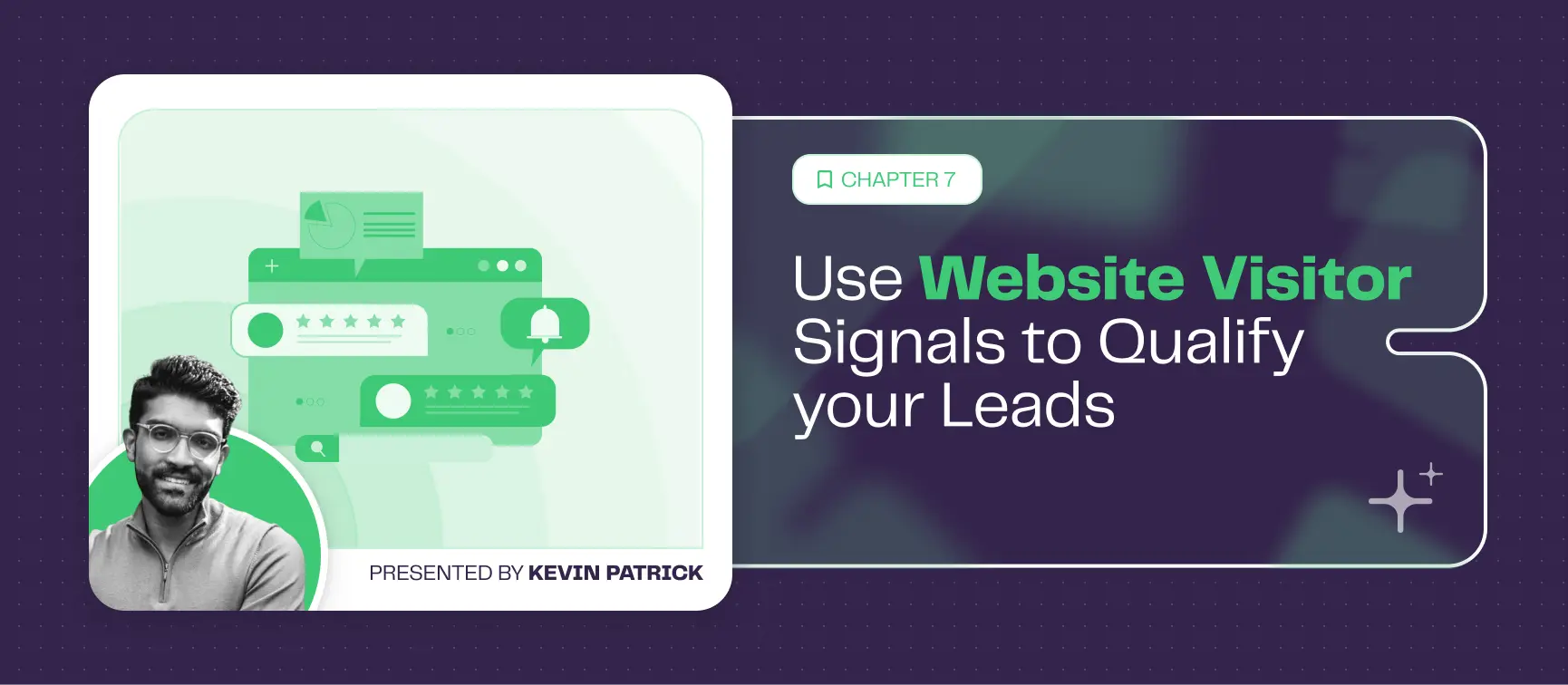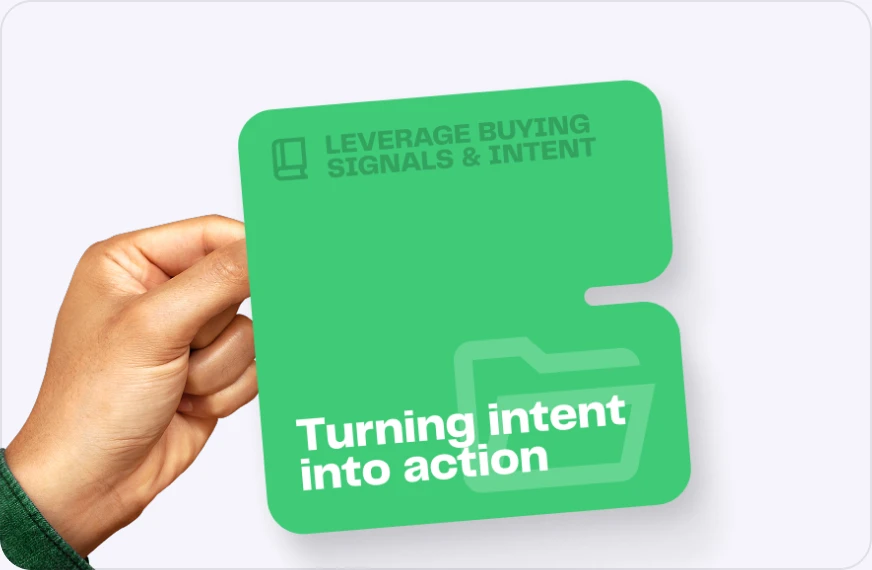
Let’s be honest: website traffic without conversion is the marketing equivalent of applause no one hears. Impressions, clicks, and even time on site are great, but you’re just watching warm leads walk away without action.
The truth? Many of those anonymous website visitors are your best prospects. They’re mid-funnel buyers, quietly evaluating tools, comparing solutions, and forming opinions—without ever filling out a form.
Today, with modern B2B website visitor tracking tools, you can identify website visitors B2B, qualify their buying intent, and engage before your competitors even notice.
This chapter is about turning that silent traffic into the pipeline. Not by guessing. But by tracking, interpreting, and activating high-intent website signals – the smart, Allbound way.
Using Inbound behavior to surface buying intent
Analyze visitor behavior on your website
Here’s the shift: treat your site like a conversation, not a catalog.
You’re not just serving content. You’re watching behavior. Every action a visitor takes—every scroll, click, revisit—is a signal. The key is knowing which ones mean “just browsing” and which ones scream “I’m in the market.”
Start by analyzing the obvious:
- Which pages are they visiting?
- How long are they staying?
- Are they returning multiple times?
- Are they bouncing between high-value areas like pricing, case studies, and demo requests?
Pages like Product, Pricing, Integrations, and Use Cases are high-intent real estate.
What you’re looking for isn’t volume. It’s patterns: people lingering on strategic pages, returning frequently, or moving through your funnel in a way that signals evaluation mode.
The data capture layer: when intent becomes actionable
In the U.S., tools like RB2B are commonly used to deanonymize traffic and surface company-level insights. It’s not perfect, and yes, it’s still U.S.-only, but it’s enough to know which companies are showing buying intent.
You’re not identifying individual visitors, but knowing that someone from Stripe or Miro is browsing your product pages? That’s more than enough to activate smart Outbound.
You can also set up tracking on your highest-impact touchpoints:
- Gated content downloads
- Interactive product tours
- Demo form visits (and abandons)
- Chatbot conversations
- Contextual surveys or pop-ups
- Clicks on pricing or feature comparison buttons
Each of these becomes a “breadcrumb” of intent. And once you start connecting the dots, you get a clearer picture of who’s warming up.
Engaging through high-intent content
Don’t wait for a demo request. Lead with value-first content designed to surface and qualify intent.
We’re talking:
- Downloadable guides tailored to niche use cases
- Webinars with real customers and real tactics
- Industry benchmarks they can’t ignore
- High-signal newsletters built to nurture and segment
And the moment someone engages? Trigger an intelligent, non-pushy sequence that matches the content to their funnel stage (Top to Bottom).
- TOFU interest = educational content + light LinkedIn touch
- MOFU = relevant case study + strategic call to action
- BOFU = tailored demo invitation + personalized value prop
You can even build a scoring matrix to rank these behaviors, something we dig into more in the scoring chapter. But the principle is simple: not all content engagement is equal. Match the intensity of your follow-up to the depth of the signal.
From intent to activation: the 3-level approach
Level 1: Identify visiting companies
Start with Clearbit Reveal to see which companies are on your site. You won’t get names, but you’ll get industry, size, location, and page-by-page behavior.
What you’re looking for:
- Repeat visits from the same domain
- Heavy engagement on product, integration, or pricing pages
- Spike in time spent vs other sessions
This is how B2B website visitor tracking reveals buying interest—without a form fill.
Level 2: Build a lead list and qualify
Once you’ve got your company list, drop it into Sales Navigator and layer on persona filters:
- Who fits your ICP?
- Who’s likely involved in the decision?
- Are they in roles that care about what you solve?
Now, you’re not flying blind. You’re engaging relevant people at a relevant company who are already shopping, they just haven’t told you yet.
And here’s the kicker: don’t lead with “I saw you visited our website.” That’s creepy.
Instead, lead with relevance:
“Hey [Name], we just released a content on [pain point] for [industry] teams—sharing in case it’s useful.”
No pitch. Just relevance.
Level 3: Automate and scale outreach with LGM
You’ve got signals. You’ve got leads. Now it’s time to activate—without burning hours building sequences.
With La Growth Machine, you can:
- Pull your Clearbit list daily via Zapier or N8N
- Enrich leads automatically
- Push to LGM and trigger multichannel outreach (email, LinkedIn, even voice notes)
- Use dynamic fields to personalize based on industry, job role, company size, or even intent category
For hot visitors, you might go the whole funnel:
Connection request => Custom DM => Follow-up email => Call
For warm traffic, slow it down:
Light LinkedIn engagement => Educational resource => Soft CTA
Set up custom exits, track replies, score by engagement, and keep iterating.
Bonus: Smarter B2B website visitor tracking with LGM
What you can track
One of the most underrated ways to track negative (or cooling) signals? Website behavior.
If someone visits your product page once and bounces, that’s noise. But if they see three times, spend less than 15 seconds each, and ignore your follow-up?
That’s a signal. And LGM helps you catch it.
- Pages visited (and in what order)
- Time spent per section
- Frequency of return visits
- Interactions with forms, chatbots, or downloads
In the US, you’ll see companies using RB2B for behavioral intelligence. For global coverage:
- Clearbit (IP-to-company mapping)
- ZoomInfo (real-time intent scoring)
- Sales Navigator Spotlights (job changes, team growth, new leadership)
Once you’ve tagged the signal, LGM lets you trigger a personalized sequence immediately.
Example playbooks: Turning cold into warm
Once a negative signal is detected, let’s walk through a few workflows you can automate inside LGM.
High-engagement visitor, no conversion
You’ve got someone who’s active but not acting. Here’s how you warm them up:
- Day 1: Personalized email referencing the exact page they visited
- Day 2: LinkedIn message with a tailored value prop
- Day 4: Email with related case study or testimonial
- Day 7: Phone call if contact info is available
- Day 10: Final LinkedIn nudge offering a free resource or invite to an event
Medium engagement, some interest shown
- Day 1: Informative email introducing adjacent solutions
- Day 3: LinkedIn intro message with light CTA
- Day 6: Value-add content drop (e.g., t, teardown, or template)
- Day 10: Webinar invite or gated offer that adds pressure-free value
Low engagement or cooling
- Day 1: Educational content on a broader pain point (problem > product)
- Day 5: Soft LinkedIn ping—comment on their post, like their content
- Day 8: Email with a “missed opportunity” angle
- Day 15: Close-the-loop message + offer to stay in touch
What to personalize
- The pages they visited
- The time they spent
- The intent you inferred
- The content you offer next
Relevance isn’t about sending more messages. It’s about making every message matter more.
Your site isn’t just a brochure. It’s a behavioral heatmap. The more you track, enrich, and activate based on that behavior, the more you turn anonymous clicks into high-velocity conversations.
The stack to get started:
- Clearbit or Snitcher to reveal company visitors
- Sales Navigator to find ICP personas
- LGM to launch personalized sequences
- Zapier or n8n to automate the whole thing
Want to see it in action?
Your best leads are already browsing. The only question is—will you catch them before someone else does?

